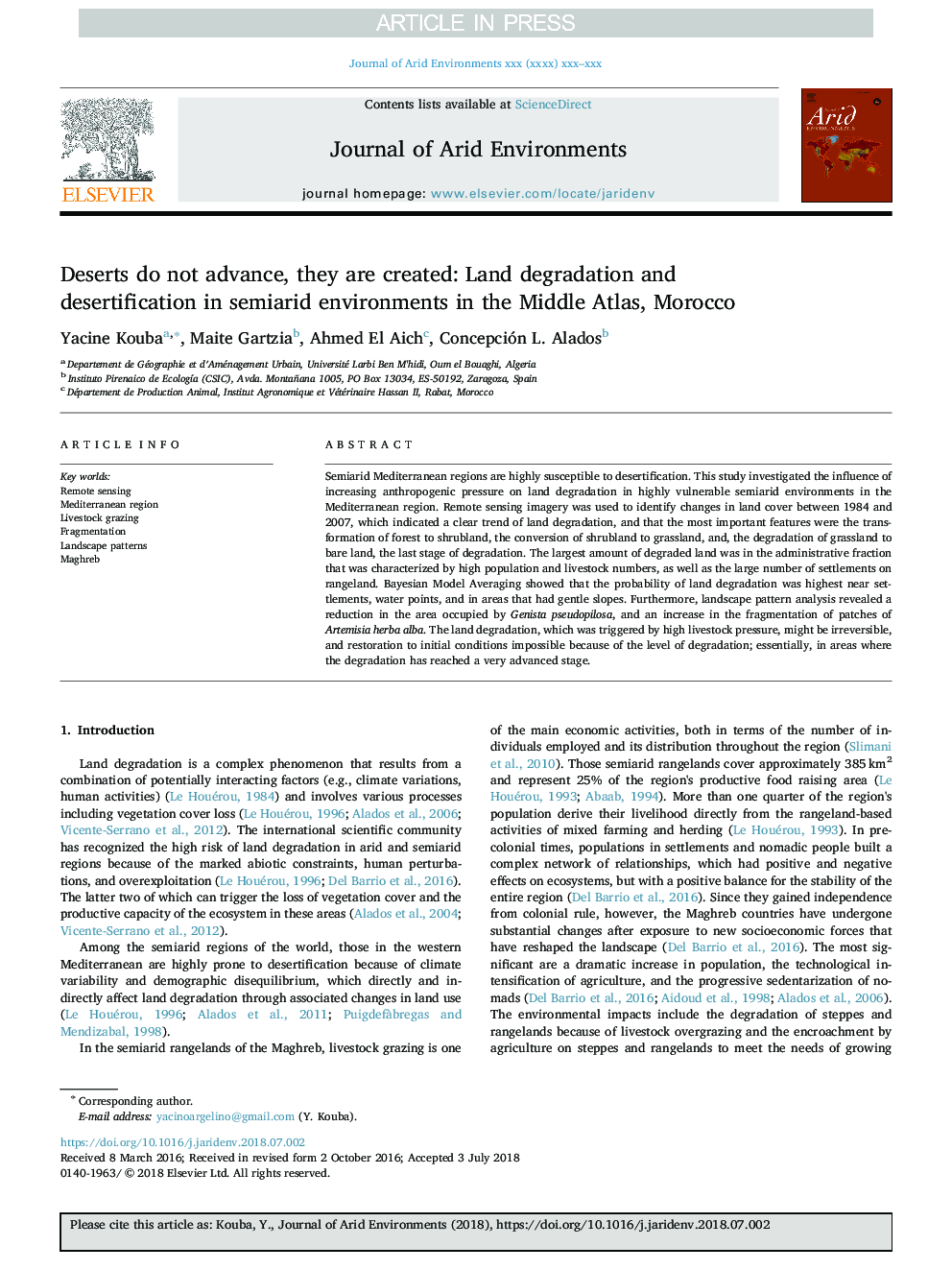| Article ID | Journal | Published Year | Pages | File Type |
|---|---|---|---|---|
| 8965891 | Journal of Arid Environments | 2018 | 8 Pages |
Abstract
Semiarid Mediterranean regions are highly susceptible to desertification. This study investigated the influence of increasing anthropogenic pressure on land degradation in highly vulnerable semiarid environments in the Mediterranean region. Remote sensing imagery was used to identify changes in land cover between 1984 and 2007, which indicated a clear trend of land degradation, and that the most important features were the transformation of forest to shrubland, the conversion of shrubland to grassland, and, the degradation of grassland to bare land, the last stage of degradation. The largest amount of degraded land was in the administrative fraction that was characterized by high population and livestock numbers, as well as the large number of settlements on rangeland. Bayesian Model Averaging showed that the probability of land degradation was highest near settlements, water points, and in areas that had gentle slopes. Furthermore, landscape pattern analysis revealed a reduction in the area occupied by Genista pseudopilosa, and an increase in the fragmentation of patches of Artemisia herba alba. The land degradation, which was triggered by high livestock pressure, might be irreversible, and restoration to initial conditions impossible because of the level of degradation; essentially, in areas where the degradation has reached a very advanced stage.
Related Topics
Physical Sciences and Engineering
Earth and Planetary Sciences
Earth-Surface Processes
Authors
Yacine Kouba, Maite Gartzia, Ahmed El Aich, Concepción L. Alados,
